Topic 13: Excretion & Homeostasis
1/32
There's no tags or description
Looks like no tags are added yet.
Name | Mastery | Learn | Test | Matching | Spaced |
|---|
No study sessions yet.
33 Terms
Carbon Dioxide is excreted through the…?
Lungs
What do kidneys excrete?
Urea & excess water and ions
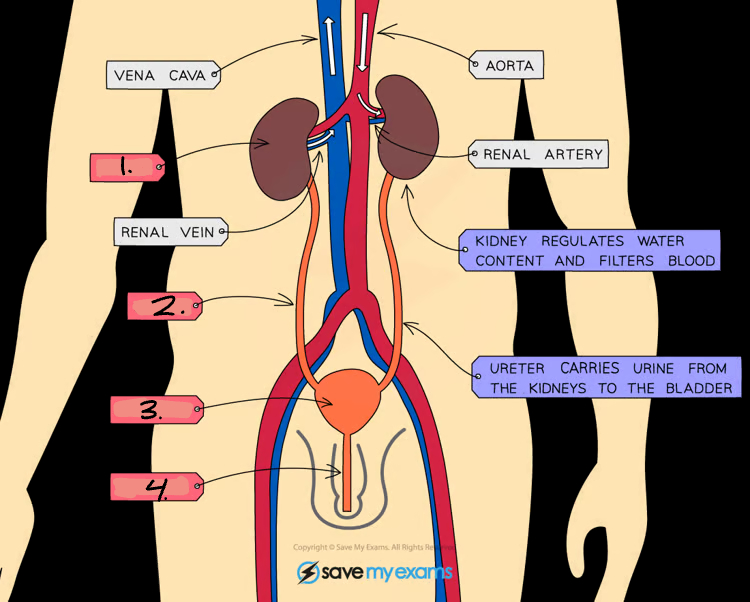
What is 1?
Kidney
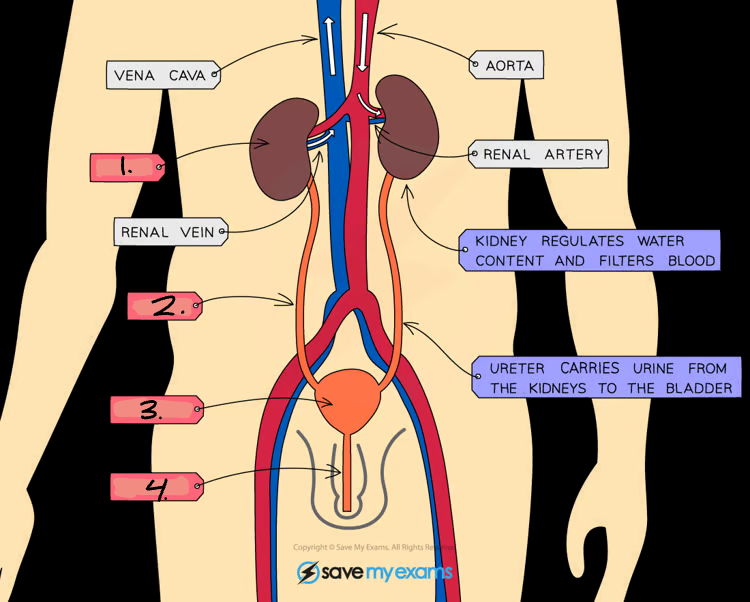
What is 2?
Ureters
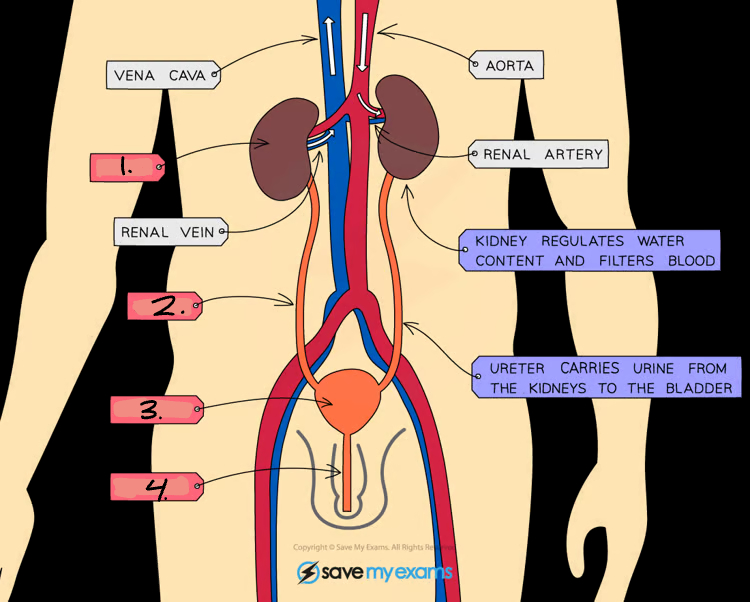
What is 3?
Bladder
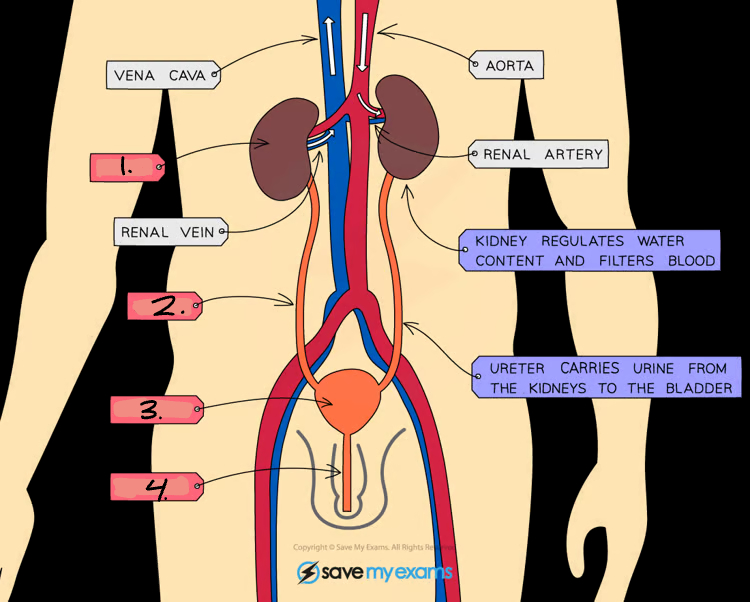
What is 4?
Urethra
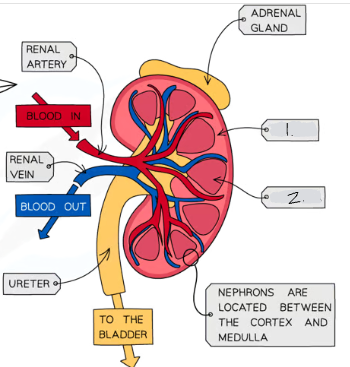
This is the structure of a kidney. What is 1?
Cortex
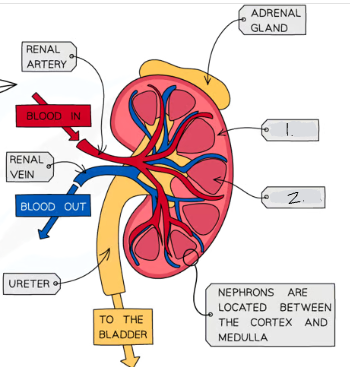
This is the structure of a kidney. What is 2?
Medulla
What is the function of a nephron?
It filters the blood to remove waste like urea, and reabsorbs useful substances like glucose, water, and some ions. It produces urine containing urea, excess water, and excess ions.
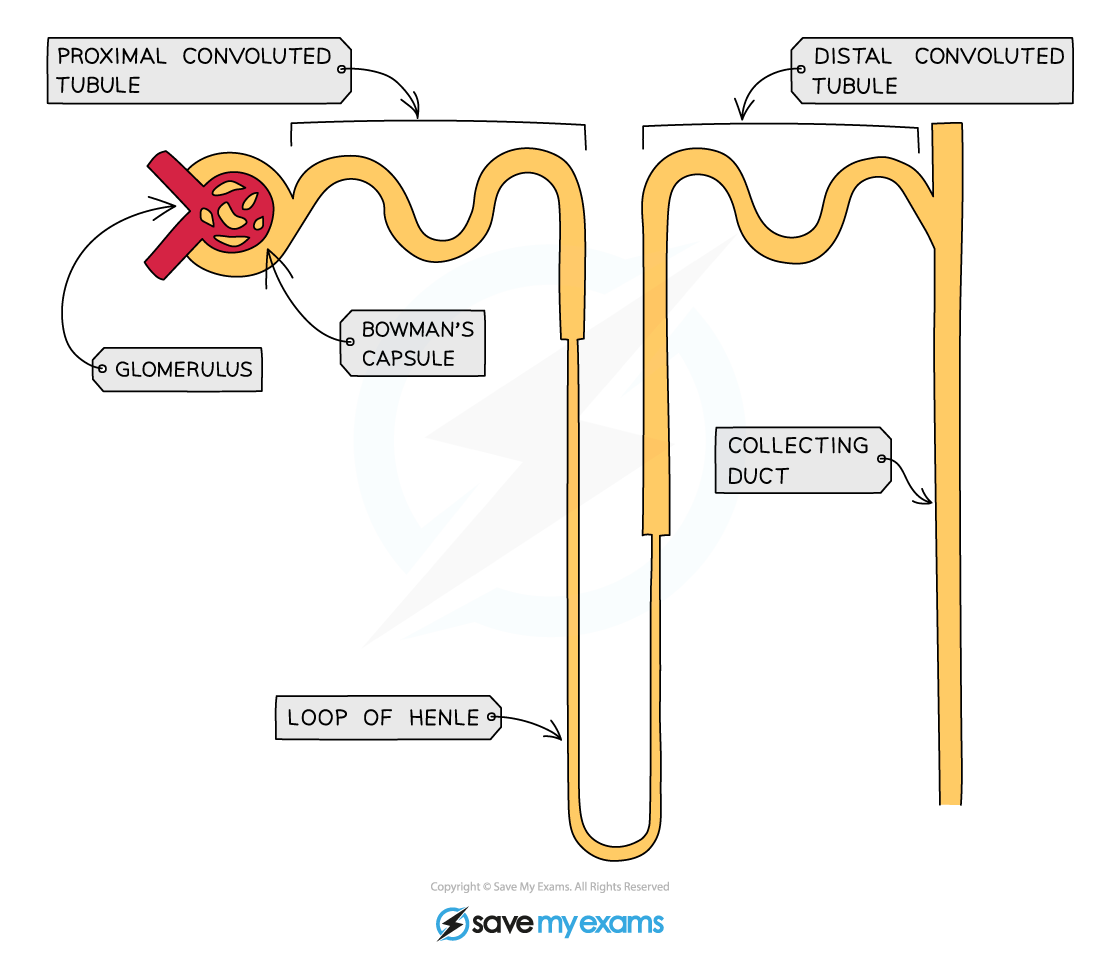
What does the structure of a nephron look like?
It has a glomerulus, bowman's capsule, proximal convoluted tubule, loop of henle, distal convoluted tubule, and a collecting duct.
What is the function of a glomerulus?
It filters small molecules like water, glucose, urea, and ions from the blood into the Bowman’s capsule under high pressure.
What is the function of the nephron in reabsorption?
In the nephron tubule, all glucose, some ions, and most water are reabsorbed back into the blood so they are not lost in urine.
What role does nephron play in the formation of urine?
Urine is formed from urea, excess water, and excess ions that remain in the nephron and pass into the collecting duct, then the ureter.
What role does the liver play in the assimilation of amino acids by converting them to proteins?
The liver uses amino acids from digested food to build proteins needed by the body, such as enzymes and hormones.
Where is urea formed?
In the liver, from excess amino acids.
What is deamination?
The removal of the nitrogen-containing part of amino acids to form urea.
Why is excretion important?
Urea is a toxic waste product formed in the liver from the breakdown of amino acids. If not removed, it can build up in the blood and damage cells or organs.
What is homeostasis?
The maintenance of a constant internal environment.
What does insulin do?
It decreases blood glucose concentration.
Explain the concept of homeostatic control.
Negative feedback is a control mechanism that keeps conditions in the body close to a set point. If a condition (like temperature or blood glucose) moves above or below the set point, the body detects the change and responds to reverse it, bringing the condition back to normal.
Blood glucose concentration is controlled by?
The liver, with the help of two hormones: insulin and glucagon, both released by the pancreas.
What happens when the blood glucose concentration is too high?
The pancreas releases insulin. Insulin causes the liver to absorb glucose from the blood, converting it into glycogen for storage, lowering blood glucose levels.
What happens when the blood glucose concentration is too low?
The pancreas releases glucagon. Glucagon makes the liver convert glycogen back into glucose, moving it out of the liver and into the blood, increasing blood glucose levels.
How is Type 1 Diabetes treated?
By regular insulin injections to control blood glucose levels. Patients also need to monitor their diet and blood sugar levels carefully and adjust their insulin dosage based on activity and food intake.

What is 1?
Hairs
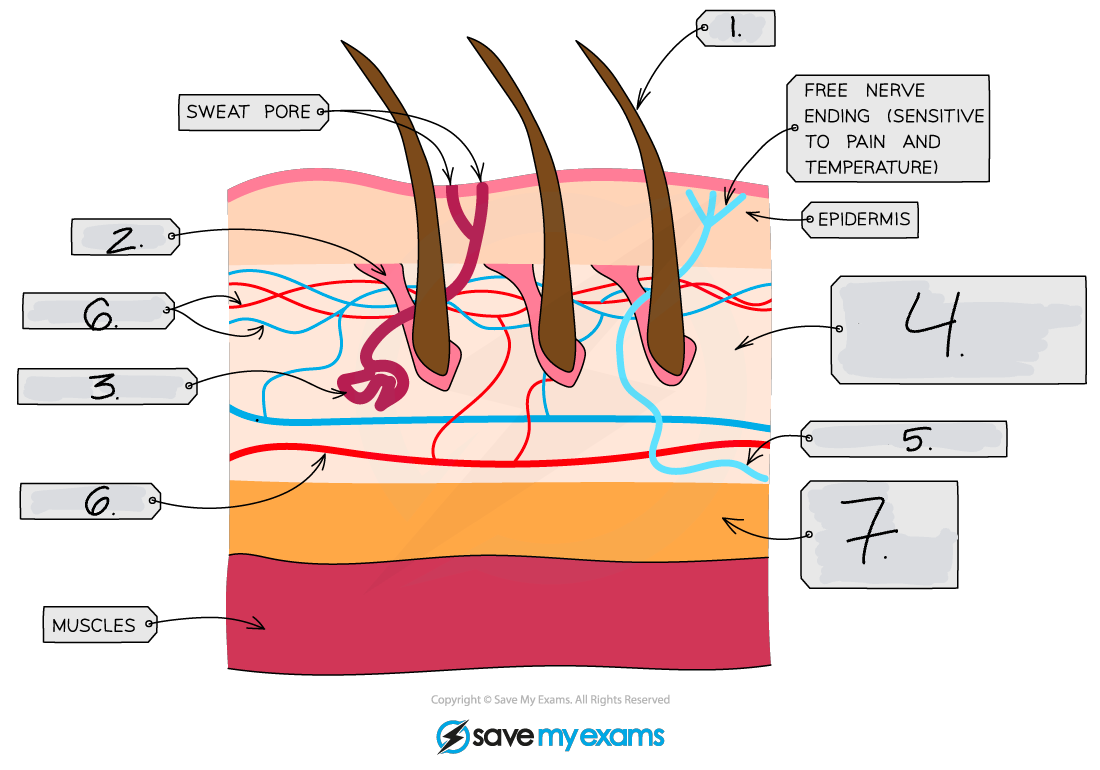
What is 2?
Hair Erector Muscle
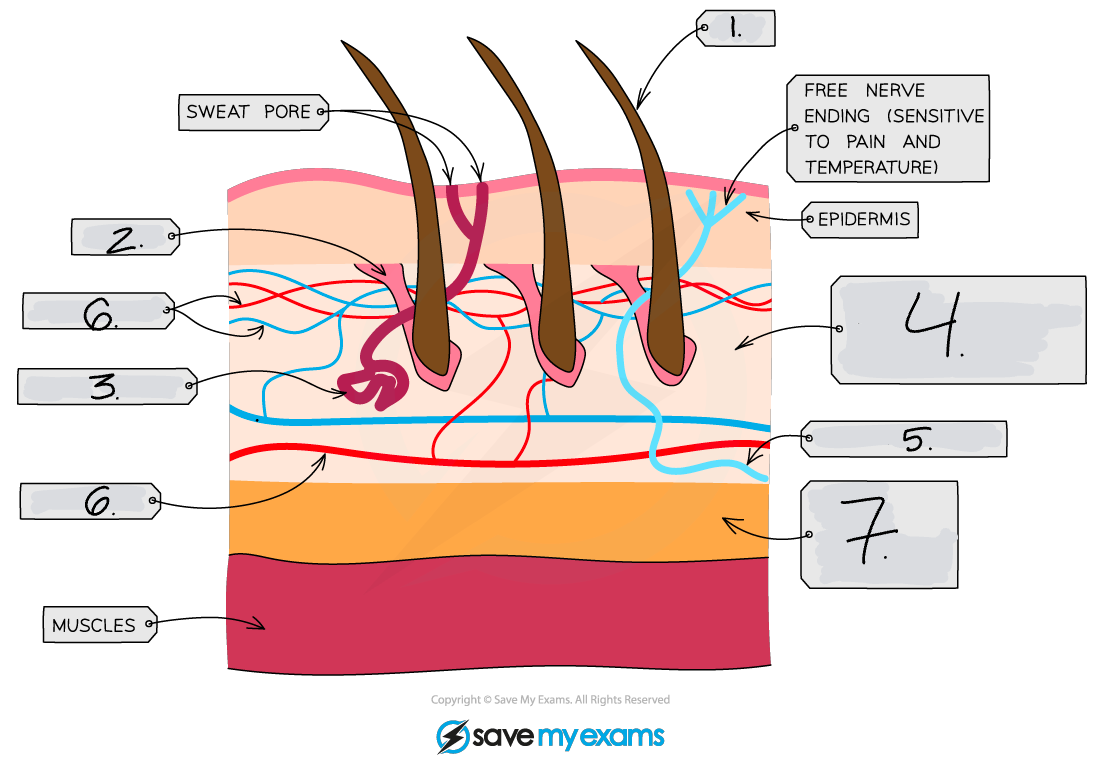
What is 3?
Sweat Glands
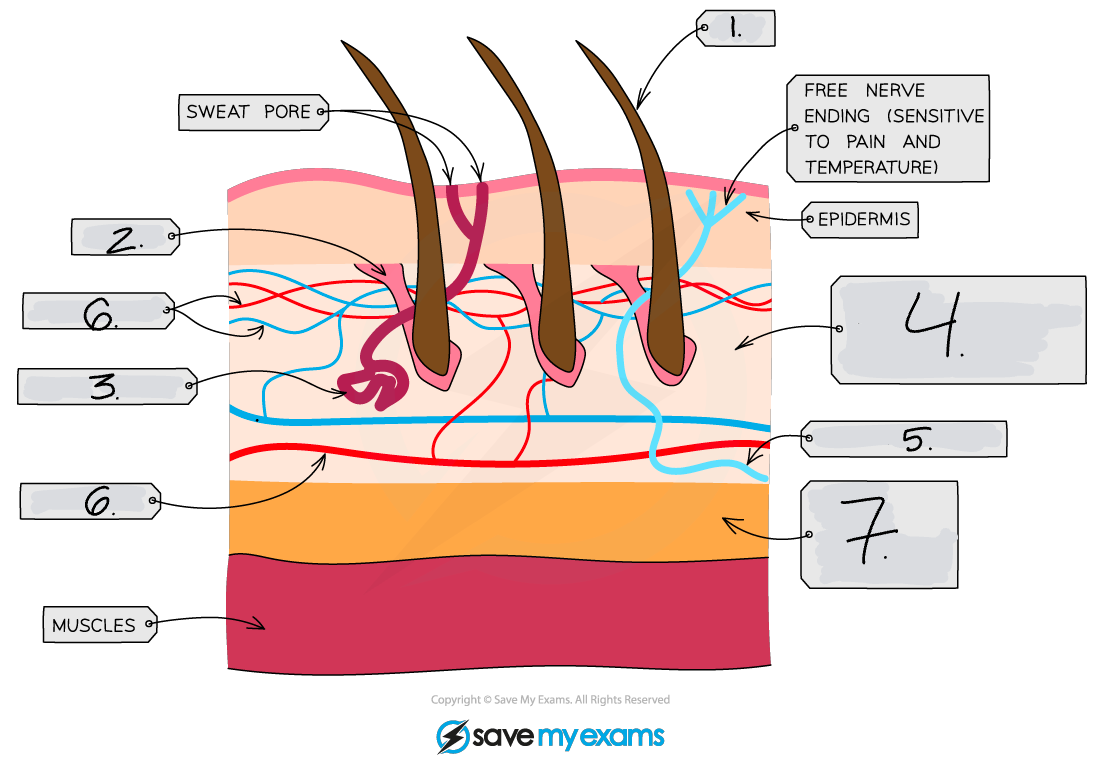
What is 4?
Touch & Pressure Receptors
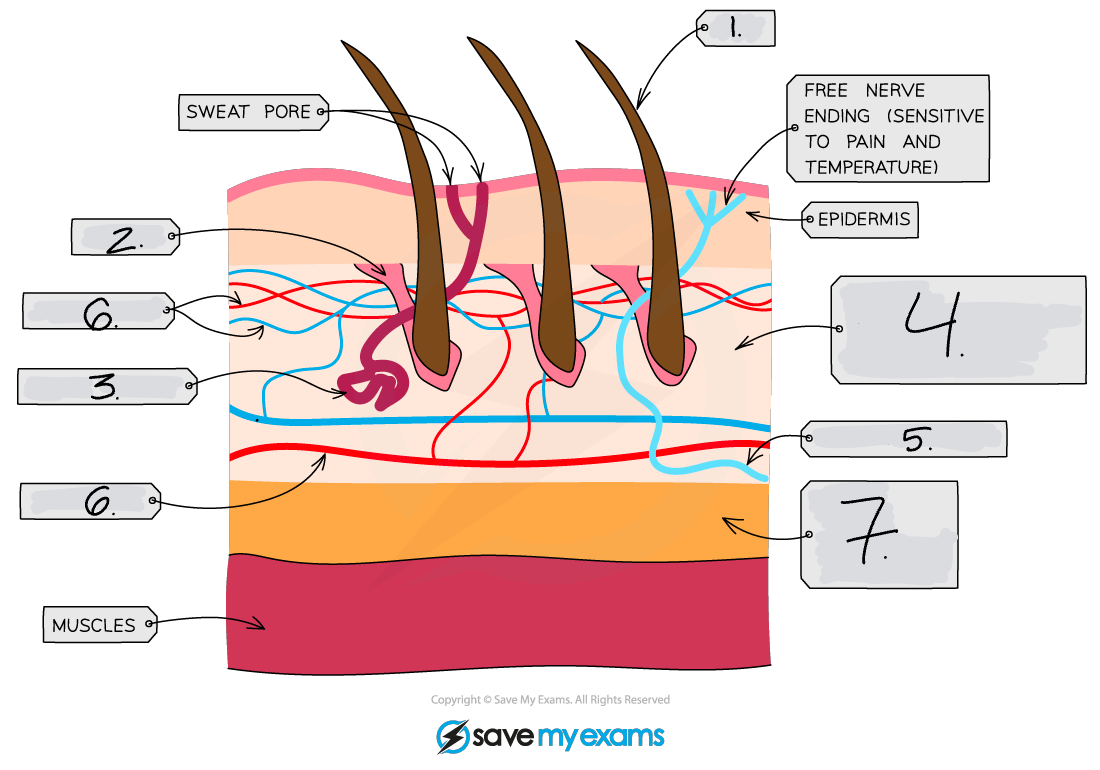
What is 5?
Sensory Neurones
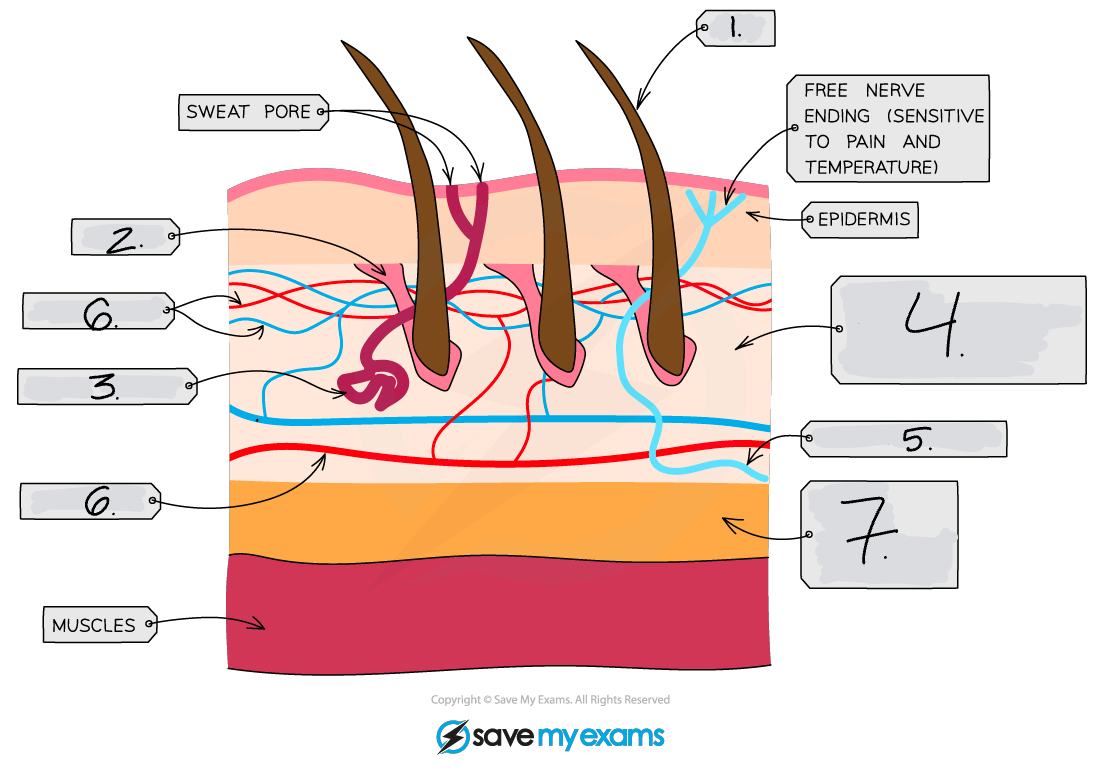
What is 6?
Blood Vessels
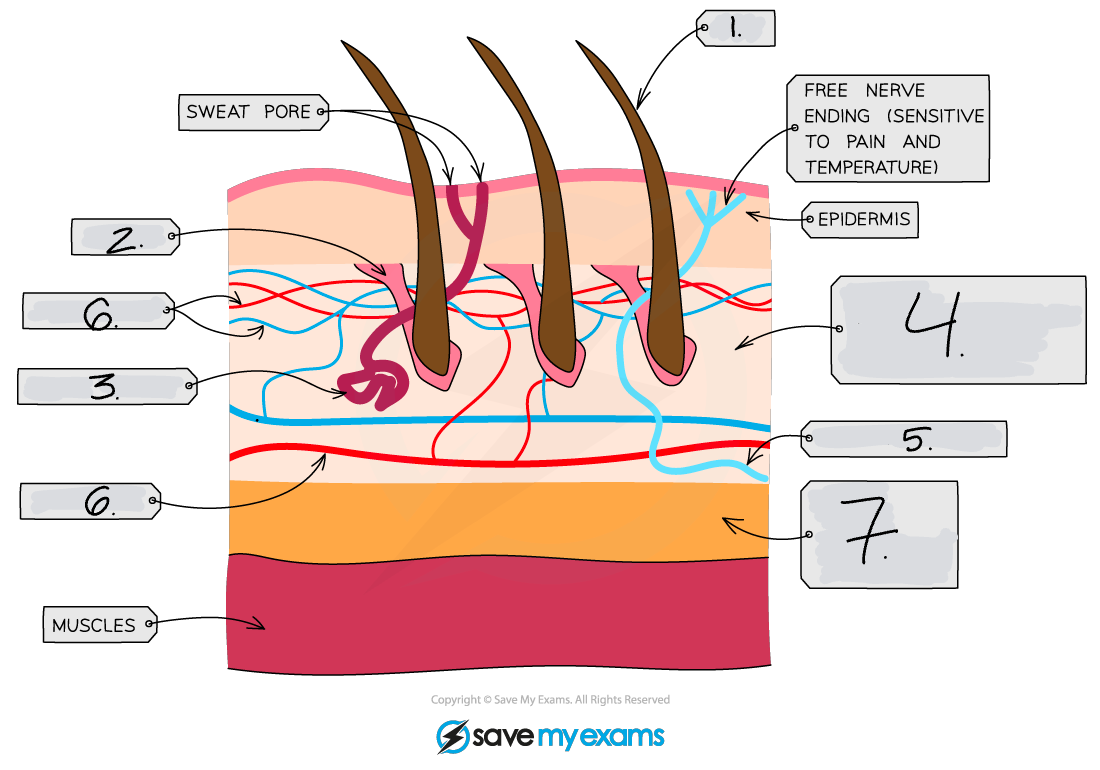
What is 7?
Fatty Tissue
How do we maintain a constant internal body temperature?
The brain, specifically the hypothalamus, detects changes in body temperature and coordinates responses to keep it constant. This is by:
Insulation: Fat under the skin reduces heat loss by acting as an insulator.
Sweating: When the body is too hot, sweat glands release sweat. As sweat evaporates, it cools the body.
Shivering: When the body is too cold, muscles contract rapidly (shiver). This produces heat from respiration to warm the body.
How does the vasodilation and vasoconstriction maintain a constant internal body temperature?
The hypothalamus in the brain controls body temperature by adjusting blood flow in the skin:
Vasodilation: When the body is too hot, the arterioles widen, allowing more blood to flow through skin capillaries. This increases heat loss through the skin by radiation.
Vasoconstriction: When the body is too cold, the arterioles narrow, reducing blood flow to the skin surface. This decreases heat loss, keeping more heat in the body.